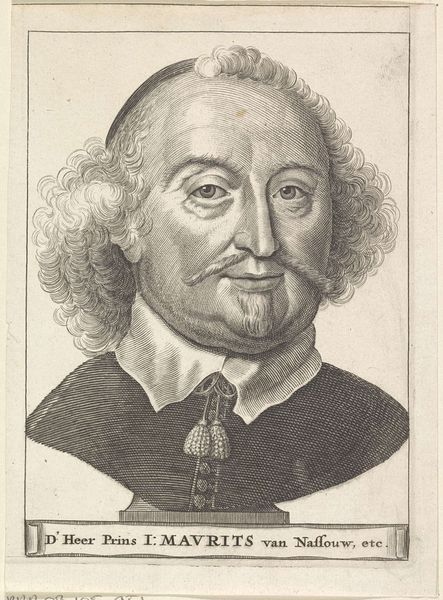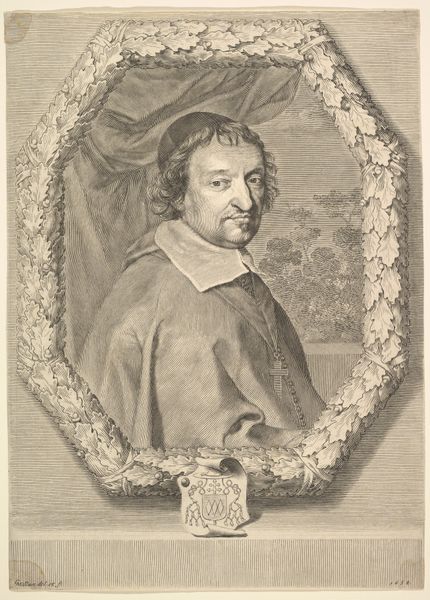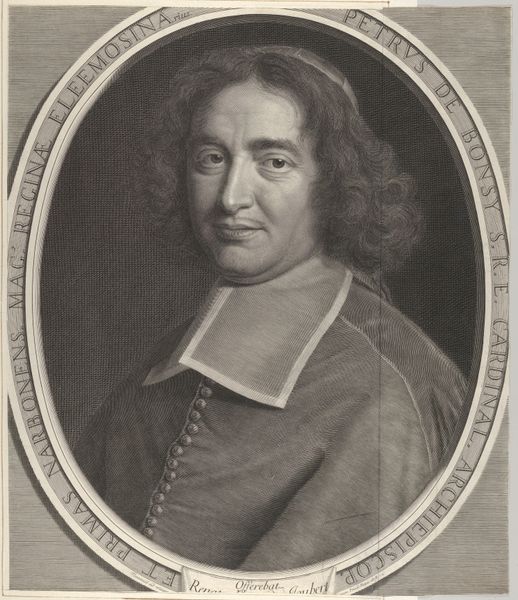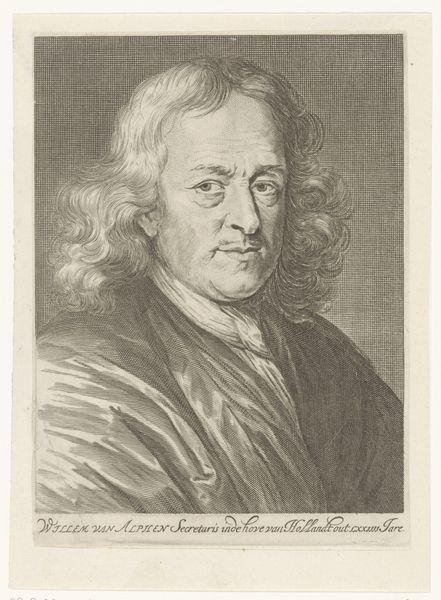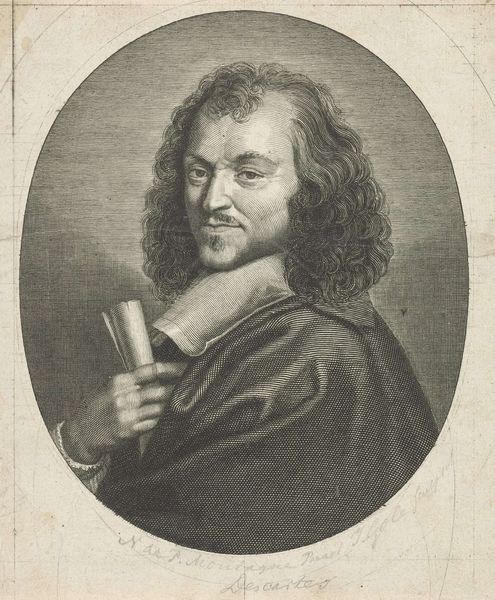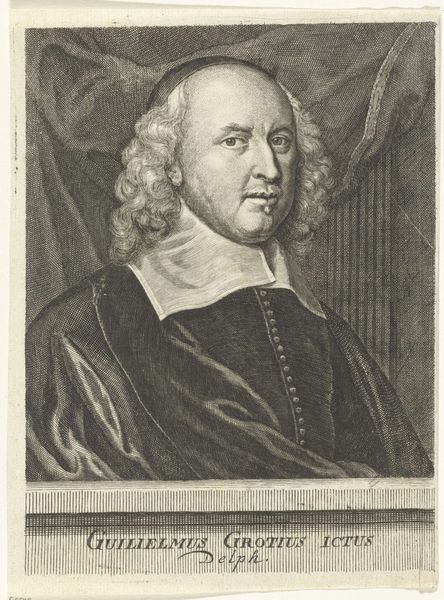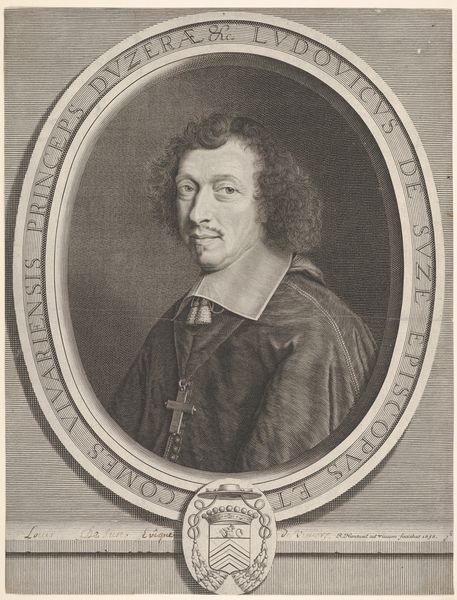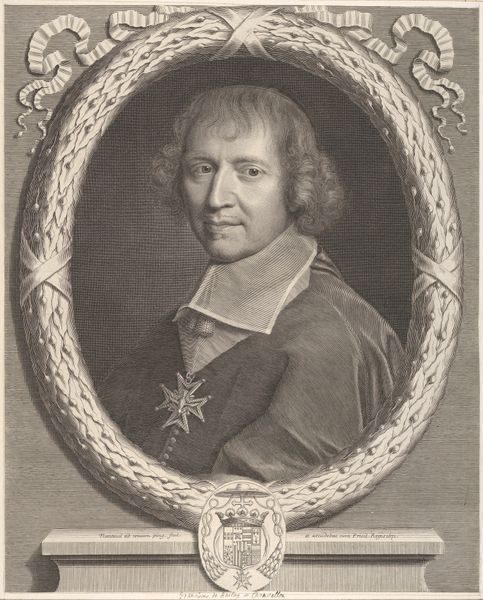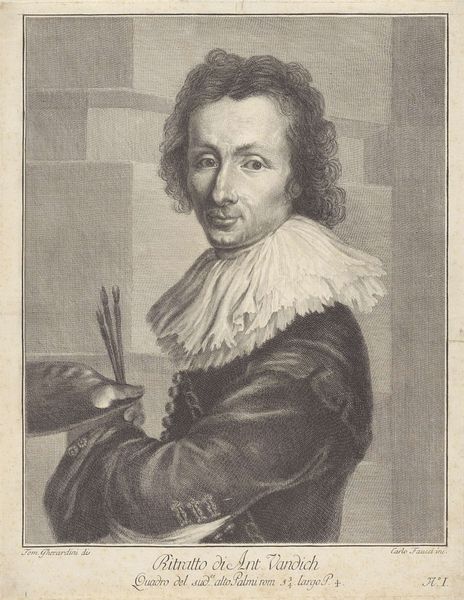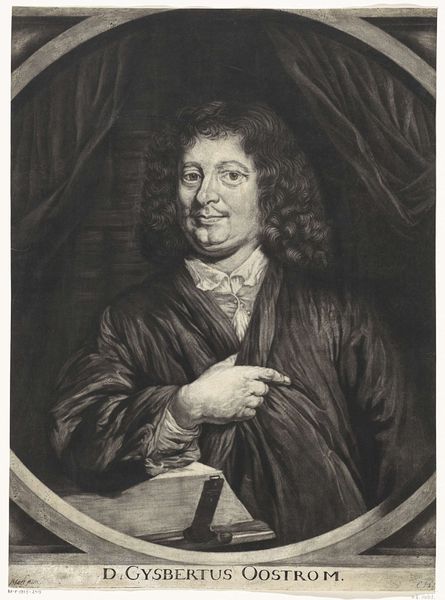
print, engraving
#
portrait
#
baroque
# print
#
caricature
#
line
#
academic-art
#
engraving
Dimensions: plate: 16.1 x 12.3 cm (6 5/16 x 4 13/16 in.) sheet: 26.1 x 17.5 cm (10 1/4 x 6 7/8 in.)
Copyright: National Gallery of Art: CC0 1.0
Curator: This engraving, titled "Victor Le Bouthillier," is by Claude Mellan. What immediately strikes you about it? Editor: The texture! It's all line work, creating incredible depth with varying density. The rendering of fabric, especially, catches the eye, offering a sense of the materials. Curator: Absolutely, Mellan’s skill with the burin is remarkable. He worked during a time of great social stratification and religious upheaval, so portraying powerful figures like Victor Le Bouthillier meant navigating intricate power dynamics through representation. Le Bouthillier held significant ecclesiastical roles. Editor: I am most intrigued by the density of the line and the pressure applied to create tone. Consider how many lines and the number of decisions the engraver has to make! This work emphasizes a deliberate choice to use a laborious process for portraiture, suggesting perhaps the enduring status associated with the church official. Curator: Exactly. The choice to depict him in a detailed portrait reflects how the Baroque era viewed leaders and power. There are gendered, political, and religious codes imbedded in the visual language of the work. What are your thoughts regarding how the art is meant to operate culturally? Editor: To the patron class, this print operates as an expression of material abundance and access. The engraver translated Bouthillier's self-importance, or perceived authority into physical density— the more laborious the rendering, the more impressive Bouthillier is meant to appear. Curator: Considering that engravings are often reproduced, do you think it speaks to the reach and consolidation of power through image circulation? Editor: Most definitely, the reproduction element democratizes access to the image and solidifies Le Bouthillier's public profile. I have certainly learned something new about Baroque techniques today. Curator: And I about material processes. It’s amazing how an engraving can open up discussions on class, gender, and political ideology.
Comments
No comments
Be the first to comment and join the conversation on the ultimate creative platform.
